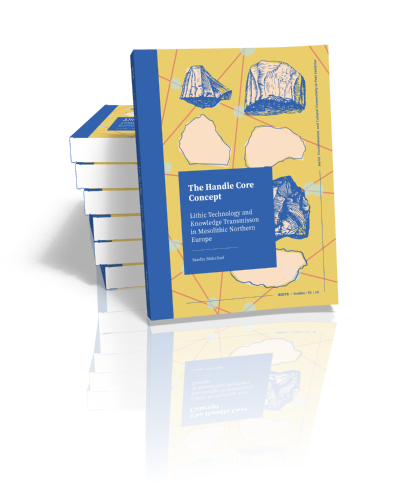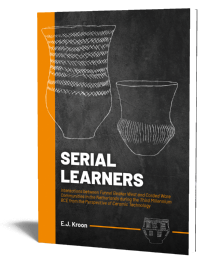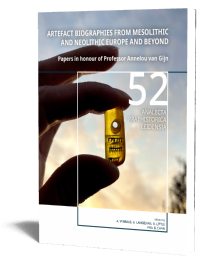Abstract:
This work deals with topics related to mobility, contacts and transmission of knowledge. The study of these topics regarding the past can promote an understanding of the social implications of migration, communication and learning today through long-term perspectives of change. This volume focuses on these topics in the Mesolithic by analysing a specialised lithic concept known previously from Scandinavia and Northern Germany. The implementation of the Handle Core Pressure Concept (HCPC) is based on a pressure technique to produce small regular blades from single-fronted cores, often utilised in slotted bone points. The use of pressure technique means that the HCPC requires social learning for maintenance and diffusion of the tradition.
The research questions focus on three aspects of the HCPC: technology, chronology and the transmission of knowledge that are involved in the diffusion process. Materials from across Northern Europe have been studied and analysed. The results show that the morphology of the materials is similar across Europe, but that there are differences in the technological choices made by knappers in different parts of the area. These variations relate to the core preparation. The technological differences are also connected to two different chronologies that are centred east and west of the Baltic Sea, which would indicate two separate technological and social traditions.
The cores east of the Baltic Sea still require more research in order to understand how they relate to other concepts in and around Northern Europe. The cores from Scandinavia, however, exhibit strong technological similarities to an older pressure-based blade concept that was already used in Scandinavia in the Early Mesolithic. The long-term use and the rapid diffusion of the HCPC indicate that knowledge and know-how must have diffused via both vertical and horizontal directionalities. These results exemplify the complex ways that mobility, social learning, material availability, tradition and many other aspects played a role in the transmission of knowledge in Mesolithic societies.
Contents
Preface of the series editors
Preface of the author
Acknowledgements
1. Introduction
1.1. The relevance of a study of past mobility, contacts and transmission of knowledge
1.2. Research area, materials and temporal scope
1.3. Objective and research questions
2. Previous research and state-of-the-art
2.1. Handle cores
2.2. Mesolithic mobility and contacts
2.3. Mesolithic landscapes
3. Theoretical framework
3.1. Technology as a social phenomenon
3.2. Transmission of knowledge – in theory and practice
3.3. The theoretical framework for this study
4. Methods
4.1. The technological analysis
4.2. Statistical analyses
4.3. Methods to establish a handle core chronology
5. Materials
5.1. Focus areas within the research area
5.2. Selection of materials and assemblages
5.3. Representativity of the materials
5.4. Site descriptions
6. Results – Technology and chronology of the handle core concept
6.1. The handle core concept
6.2. Chronology of the concept
7. Discussion
7.1. New insights into the HCC, chronology and knowledge transmission
7.2. The handle core vs. the single-fronted core
7.3. Chronology of the handle core concept
7.4. Knowledge transmission in Mesolithic Northern Europe
7.5. A wider perspective on the use of single-fronted cores
7.6. Outlook and future objectives
8. Conclusions
9. Summary
9.1. Chapter 1 – Introduction
9.2. Chapter 2 – Previous research
9.3. Chapter 3 – Theoretical framework
9.4. Chapter 4 – Methods
9.5. Chapter 5 – Materials
9.6. Chapter 6 – Results
9.7. Chapter 7 – Discussion
9.8. Chapter 8 – Conclusions
References
Appendix I – Data sets for cores and blades
Appendix II – Radiocarbon dates

Dr.
Sandra Söderlind
Sandra Söderlind is an archaeologist with interests in lithic technology, transmission of knowledge and Mesolithic material culture. She did her PhD within the ROOTS Young Academy at Kiel University, in Germany, resulting in the thesis “The Handle Core Concept. Lithic Technology and Knowledge Transmission in Mesolithic Northern Europe”.
read more











